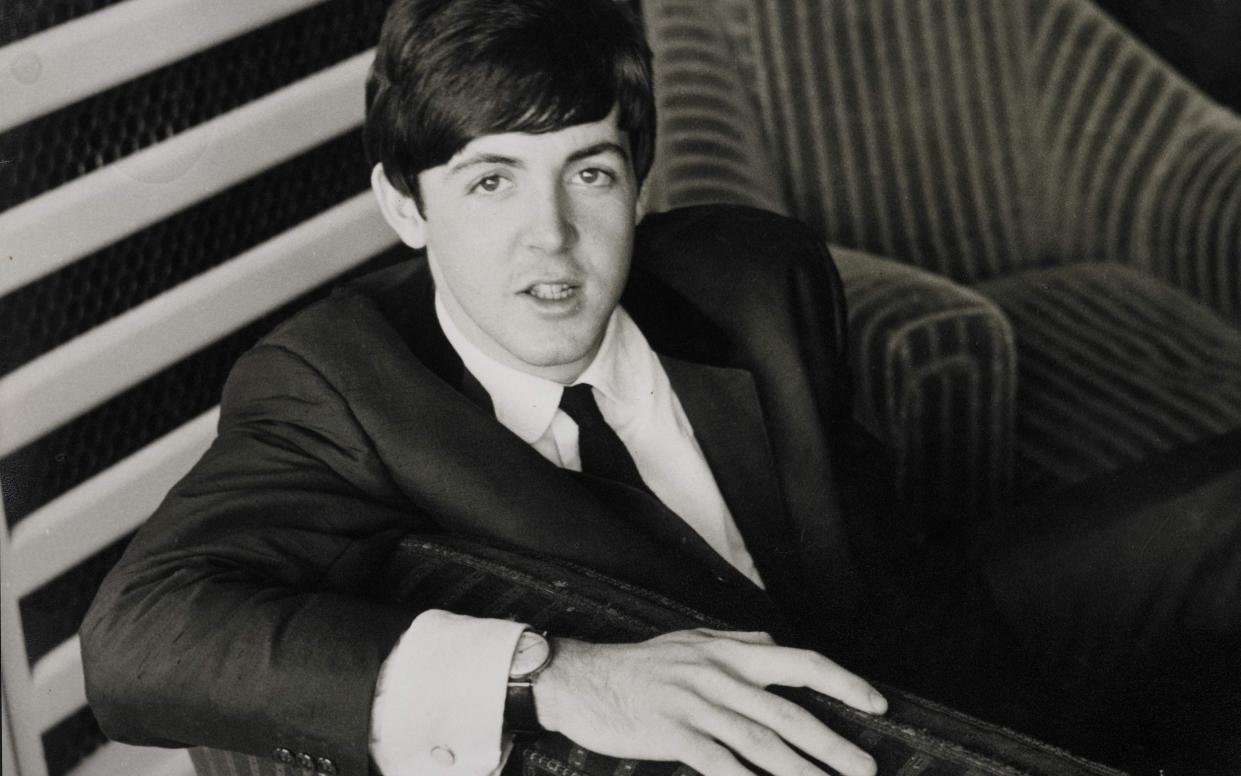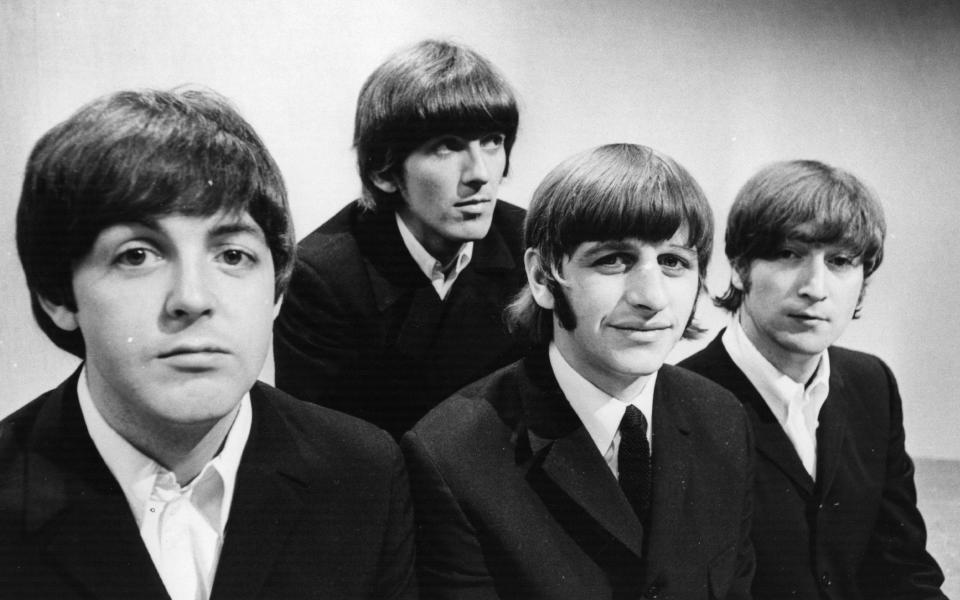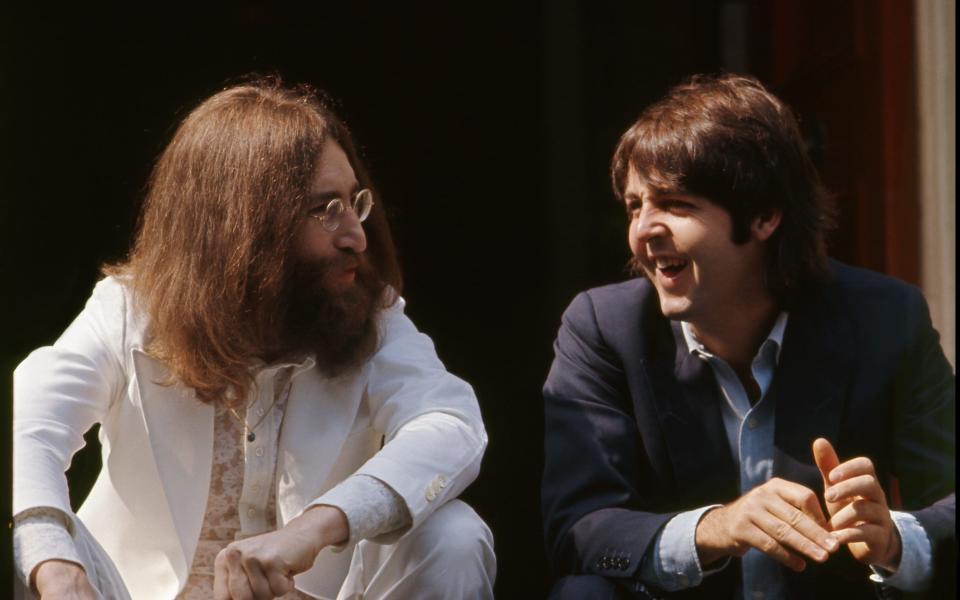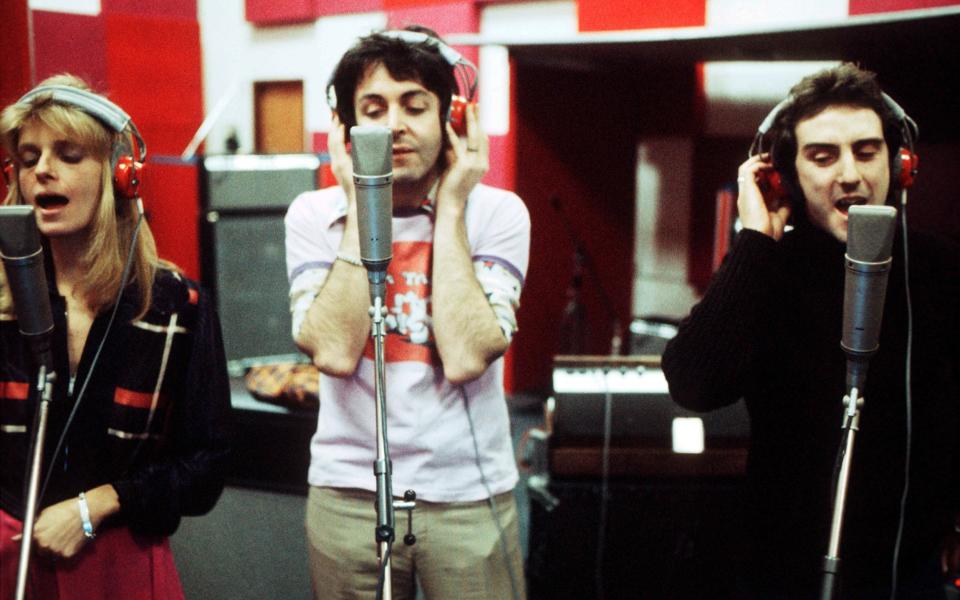Paul McCartney: The Lyrics, review: charming, chatty but great literature? I don’t think so

- Oops!Something went wrong.Please try again later.
- Oops!Something went wrong.Please try again later.
- Oops!Something went wrong.Please try again later.
Sir Paul McCartney admits to sometimes having “imposter syndrome” when he thinks about how a boy from a working-class Liverpool family became a world-famous musician, performer, singer and songwriter. “I still feel like I’m just playing at it.” He describes his life as “some puzzle” in which “every song is part of the solution”.
McCartney is arguably the greatest living songwriter of the modern era. In his collaboration with John Lennon in the Beatles, he transformed popular culture, while in his subsequent hit-making career (solo and with Wings), he continued to craft world-beating hits for decades.
Despite the slightly imposing nature of this massive, two-volume career retrospective portentously presented as Paul McCartney: The Lyrics, the great composer wears his talent quite lightly. “With most of my compositions, there’s a simple trick, because I’m not massively proficient,” he admits, discussing Paperback Writer. “For example, I couldn’t always go and hit the right notes on the piano. So there’s always some sort of holding position. I just vary that. I move around a little bit on the surface, but I don’t move too far from the anchor.”
His composing methodology is revealed as a kind of innocent and endless curiosity, “finding what chords work well next to each other, what progression suggests a new melody”.
The same applies to lyrics, which invariably follow the melody (the only exception in his entire oeuvre being All My Loving, which he scribbled on a tour bus). “I had this belief that you could throw words together and they would attain some meaning,” he says, discussing a Wings trifle called Spirits of Ancient Egypt.

It is a worrying admission for a book that focuses on those lyrics, many of which don’t really bear close scrutiny. “To tell you the truth, I’m a little bit embarrassed by this song,” he admits of Rock Show by Wings, which features the immortal lines “It’s silly willy with the Philly band / Could be, oo-ee.”
Retailing at £75, this mighty tome is billed as the closest thing to an autobiography McCartney will ever write. It comprises 154 songs, with hundreds of fascinating photos and handwritten lyrics from McCartney’s collection, and an informal, thoughtful text assembled from conversations conducted with acclaimed Irish poet Paul Muldoon.
Despite all the hoopla surrounding its publication, there are no great revelations, and nothing that would come as a surprise to any fan who has dipped into the vast wordage expended on the Beatles in the five decades since they broke up. There is, nevertheless, considerable charm hearing McCartney retell familiar stories in his own way.
Memories of Lennon feature significantly, as he recollects his closeness with his original co-writer and mulls the tensions between them. “John always had a lot of bluster. It was his shield against life.
“We’d have an argument about something, and he’d say something [caustic]; then I’d be a bit wounded, and he’d pull down his glasses and peer at me and say, ‘It’s only me, Paul.’ That was John. ‘It’s only me.’”

McCartney contrasts Lennon’s unhappy childhood with his own upbringing, gathered around his father at the piano for family singalongs. The book is filled with warm memories of his mother Mary and characters like Uncle Albert and Auntie Jin who pop up throughout his songs. “As a boy, I thought everyone’s family was like that, until I met people like John and realised that wasn’t true, and perhaps it was the contrast of our different outlooks that produced a kind of magic. But I was born into that way of thinking; that it’ll be OK in the end.”
This underlying positivity infuses McCartney’s art with what he refers to as OSS (Optimistic Song Syndrome). “The situation would have to be pretty Blade Runner, pretty bad, for me to not be able to think, ‘Let’s sing a song …’”
Songs are arranged alphabetically, leading to a digressive, chatty text.
Part of the book’s charm is that the more obscure songs often trigger deeper and less over-familiar memories, so you find out more about McCartney’s inner life from such solo trivia as Put It There and Eat at Home than many Beatles masterpieces.
A veritable army of accredited fact checkers have overlooked some significant errors. McCartney talks proudly of being influenced by Jimi Hendrix for his use of feedback on Paperback Writer, which was actually written and recorded months before Hendrix arrived in London. More grating is his casual assertion of writing a verse about Tara Guinness’s death in a car crash on A Day in the Life, which was mostly the work of Lennon.
But perhaps we can forgive a blurring of McCartney’s memory. It has been a long, eventful and accomplished life. What is most intriguing are the omissions. This is not McCartney’s complete works, missing around 350 other songs, many of such slapdash lyrical quality they may have lowered the slightly pretentious tone of the venture (there is no close analysis of such palpable nonsense as Biker Like an Icon).
And while McCartney speaks politely of his Sixties girlfriend Jane Asher, very lovingly of late wife Linda Eastman and romantically of his third marriage to Nancy Shevell, there is no mention at all of his disastrous short-lived marriage to Heather Mills, presumably the “queen of my heart” referred to in the 2001 song Heather (nowhere to be found in these pages).

There is a tendency to avoid conflict, grief or anything that might reflect badly upon him, such as his 1980 incarceration for 10 days in a Japanese jail for possession of cannabis. Like his songs, McCartney’s reminiscences lean towards the light, with a gleeful penchant for saucy seaside postcard naughtiness. Of the famous line, “What do you see when you turn out the light?” from With a Little Help from My Friends, he cheerfully admits the answer should have been, “Your d---. But it just doesn’t scan.”
He confesses that Girls’ School by Wings was inspired by Japanese pornography, including a lecherous verse about an 18-year-old girl who “knows what she’s waiting for”.
“The MeToo movement is really what she was waiting for, but no one knew this at the time,” he notes.
McCartney is a playful and brilliant wordsmith, but his popularity is based on rich melodicism and harmony. His book of lyrics is charming, but fails to support Muldoon’s pretentious assessment that he is one of the great literary figures of our time.
As McCartney admits of minor ditty Pretty Little Head, “Sometimes when I’m blocking out a song, I just sort of hear a word and I think, ‘Well, that doesn’t mean anything,’ and I keep trying to change it but it just keeps coming back, and in the end I go, ‘Oh, sod it, it doesn’t matter. It fits.’”
Some puzzles, perhaps, are never meant to be solved.
Paul McCartney: The Lyrics (Allen Lane, £75) is out today

